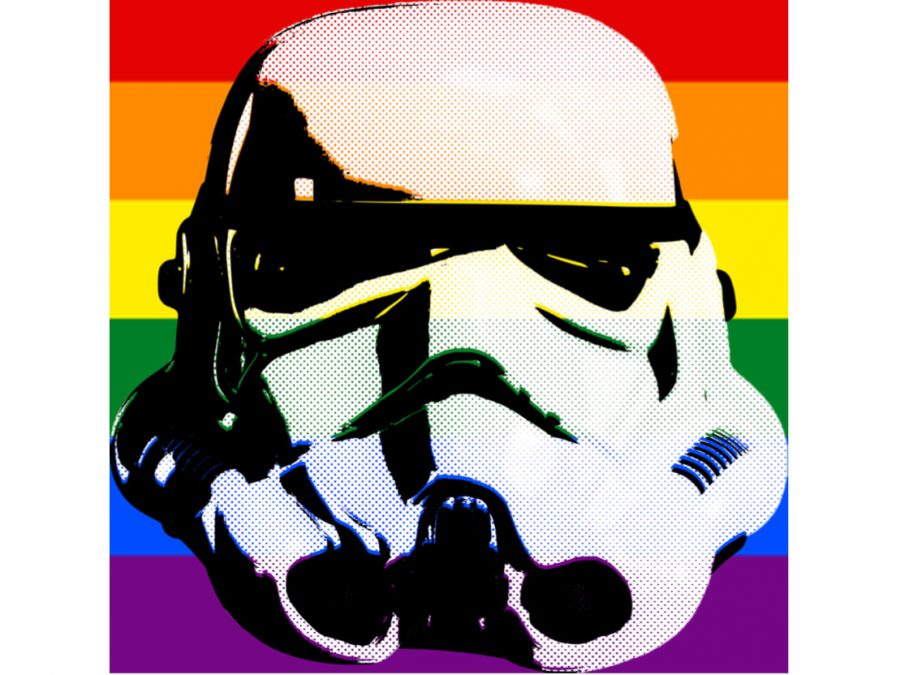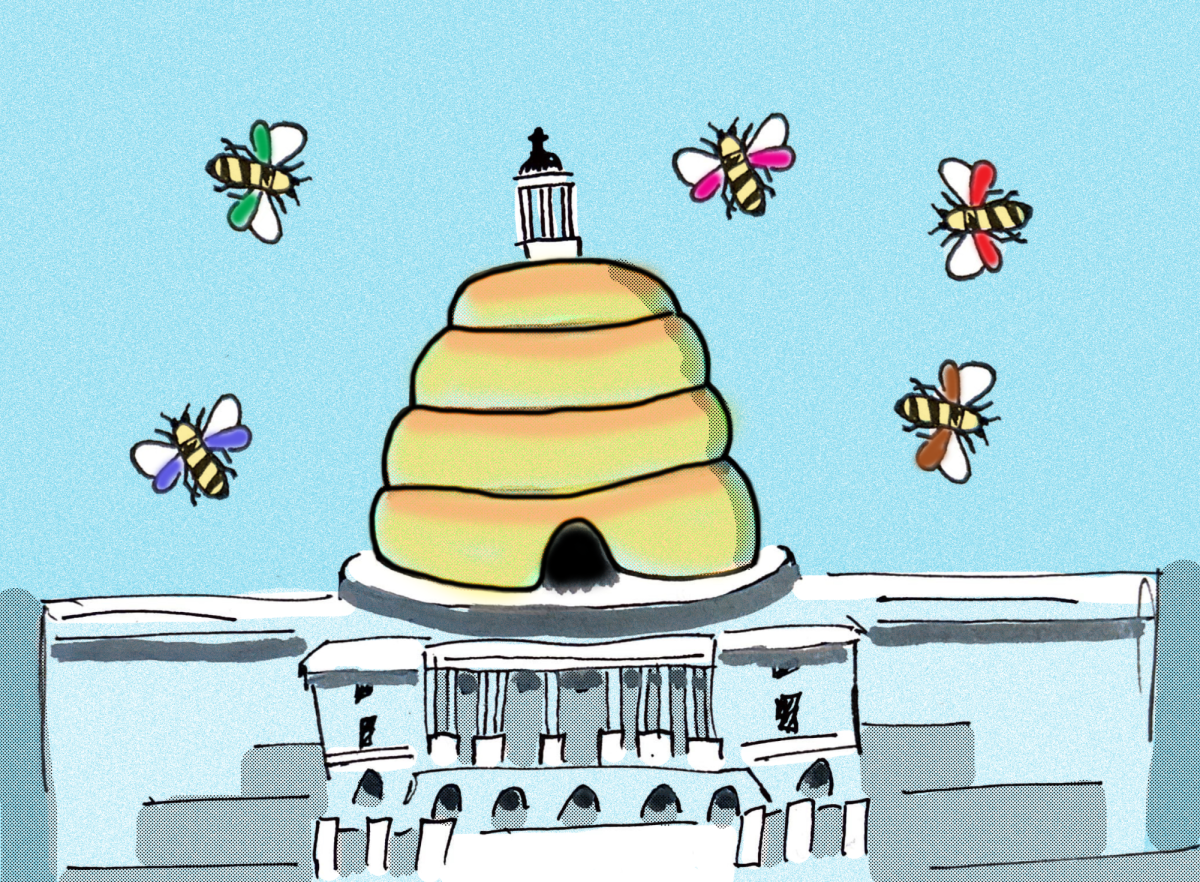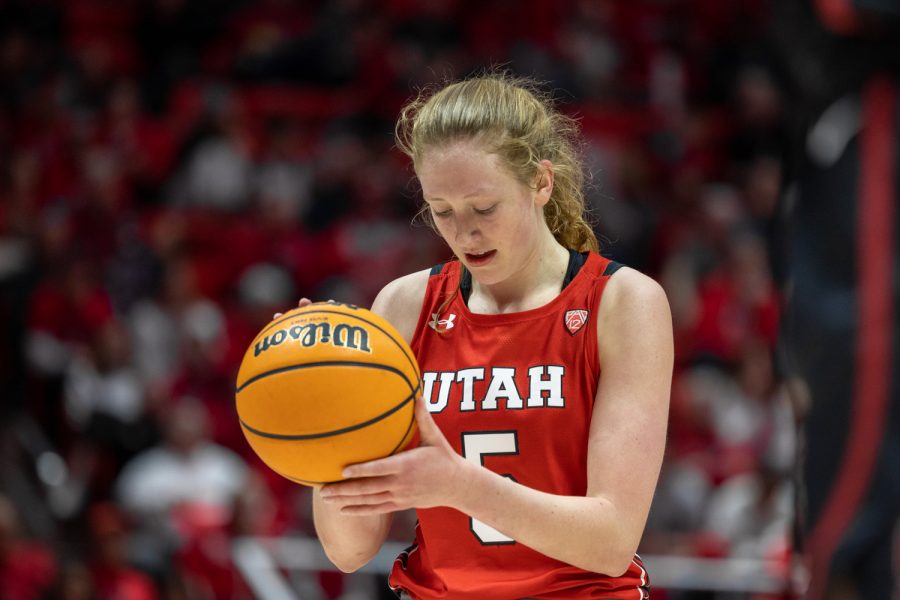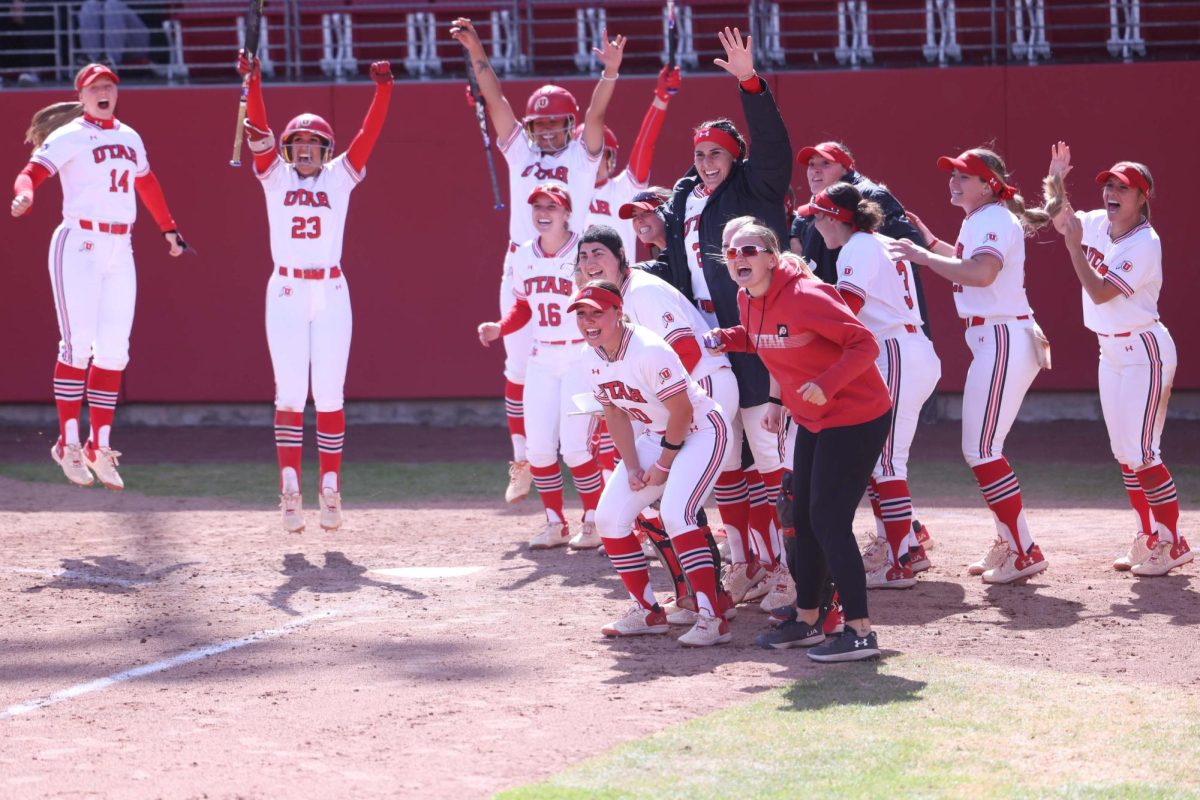Christopherson: Star Wars Doesn’t Deserve Any Credit for Queer Representation
January 15, 2020
If you live in America and have friends, it’s safe to bet that you saw “Star Wars: The Rise of Skywalker” over winter break, regardless of whether you’re a fan of the franchise. Frankly, it was hard to avoid. I got roped into spending a whole $13 to see it in 3D (the regular showing was full) despite being deeply apathetic about the new trilogy. It’s less likely, though, that we all caught the split-second kiss between two unnamed women characters at the end of the movie.
If this brief queer moment wasn’t, as a recent piece in The Hollywood Reporter pointed out, “technically history-making,” it would be absolutely forgettable — for viewers who actually noticed it in the first place, that is. It takes place amid a flurry of (spoiler alert) post-victory embraces, lasts roughly one second and features two characters without names, personalities, backstories or relevance to the plot of the movie. In even less time than these women appear on screen together, J.J. Abrams could have snipped the kiss out of the film and all our lives.
Of course, the writer-director still touted this missable moment as meaningful queer representation during the press tour for the movie. A few weeks ahead of its release, Abrams told Variety that “in the case of the LGBTQ community, it was important to me that people who go to see this movie feel that they’re being represented in the film.” The kiss is not queer representation, though — it’s unabashed tokenism, and it’s offensive.
Unfortunately, instances like Abrams’ misleading press tour remarks about “the Star Wars kiss” are so common that we have a word for them: queerbaiting, which essentially means attracting queer audiences — to books, TV shows, or movies — by hinting at the possibility of gay relationships between characters, but failing to include anything that decidedly confirms their queerness, ultimately avoiding actual representation. Disney does this all the time, even in the other recent Star Wars films. Take Finn and Poe’s intimate relationship in the previous two episodes of the franchise. Though it seemed possible (and many fans hoped) that the two male characters would turn out to be “boyfriends,” they remained platonic in Episode IX, with Abrams insisting that their friendly relationship “is a far deeper one than a romantic one.” (If it helps, John Boyega was disappointed too.)
Queerbaiting reduces LGBTQ+ characters to sidekicks and cuts the real community down to a market — but, plot twist, we’re actual people. Like other actual people, we have varied interests, ranging from Star Wars and Harry Potter to basketball and poetry and organic gardening. Some of us look and sound exactly how straight people imagine we look and sound; others might not seem queer even after a really close reading. There are queer people of every race, every religion, every ability and every Myers-Briggs personality (I’m ENFJ). We like every kind of music and food and weather. We experience queerness in vastly different ways and feel its influence on other aspects of our lives to varying degrees. Meaningful representation takes all of those things into account.
For filmmakers like Abrams who might struggle to grasp that level of nuance, there are resources available to help. First, plenty of good examples of queer representation in mainstream media already exist. Think Captain Holt and Rosa Diaz in NBC’s “Brooklyn Nine-Nine,” the lovable Fab Five from “Queer Eye,” Simon in “Love, Simon,” Amy in “Booksmart” — even Oscar from “The Office,” depending on the episode.
Next, in case these and other instances of representation aren’t helpful references on their own, GLAAD (an advocacy organization that monitors LGBTQ+ representation in TV and movies) has designed the Vito Russo Test to make this issue a little clearer. All it takes for a film to pass this representation test is the inclusion of an “identifiably” queer character who is not “solely or predominantly defined by their sexual orientation or gender identity” and is “tied into the plot in such a way that their removal would have a significant effect.”
The Vito Russo Test is not a high bar. But it matters that movies meet its standards. According to GLAAD’s 2019 Studio Responsibility Index, “inclusive entertainment or news media has a significant effect on the viewer’s perceptions of the LGBTQ community.” And people from any marginalized community will tell you that seeing themselves represented in media (or not) can have far-reaching impacts on their self-esteem and self-worth. “Saturday Night Live” star Kate McKinnon made just that point in her speech at the Golden Globes earlier this month, where she presented an award to Ellen DeGeneres: “The only thing that made [being a lesbian] less scary was seeing Ellen on TV.”
With stakes that high and a bar so low, meaningful queer representation should not be too much to ask of J.J. Abrams, Disney, or any film studio — and the Star Wars kiss absolutely does not count.












